Ready to embark on a botanical adventure? We’re about to dive into the colorful world of flowering succulents. These captivating blooming varieties will surely make your indoor garden a spectacle of charm and color. Each bud is a promise of beauty ready to unfold under your nurturing care.
With a wide spectrum of flowering succulents available, finding the perfect fit for your indoor garden is a journey of joy and discovery. These botanical wonders come with vivid foliage and impressive blooms that span all shades of the rainbow. So whether you’re a fan of muted pastels or vibrant hues, there’s a flowering succulent that’s tailor-made just for you.
Table of Contents
1. Moonstones (Pachyphytum oviferum)

These charming succulents from Mexico could be your indoor garden’s very own fairy-tale characters. Moonstones, known for their unique shape and color, surprise you with their wintertime display of red, orange, or pink flowers. The ethereal bluish-green sepals only add to their appeal. It’s like watching a beautiful love story unfold every time a new bud opens up.
- Native to: Mexico
- Ease of care: Moderate
- Flowering Season: Winter and early spring
- Flower colors: Red, Orange, Pink
2. Peanut Cactus (Echinopsis chamaecereus)

The Peanut Cactus, native to Argentina, is a delightful addition to any garden. Easy to care for, this succulent displays striking red-orange flowers in late spring and summer.
And there are also a few more varieties that you should check out. The ‘Arlequin’ variety produces variegated red and yellow flowers, ‘Rose Quartz’ has rose-purple blooms, and the ‘Annie’ variety has the cutest pink-yellow flowers.
- Native to: Argentina
- Ease of care: Easy
- Flowering Season: Late Spring and Summer
- Flower colors: Red, yellow, orange, pink, white, or even purple
3. Desert Rose Plant (Adenium obesum)

This native of the Arabian Peninsula and Africa is a warming presence in any space. Blooming from early spring to early autumn, its flowers are just lovely.
While Adenium obesum is the most common species, there are a few more you can choose from. For example, Adenium multiflorum looks like a dwarf baobab and it’s leafless when in flower, and Adenium somalense var. Crispum is slow-growing and produces smaller, but variegated flowers.
- Native to: Arabian Peninsula and Africa
- Ease of care: Moderate
- Flowering Season: Early Spring through early Autumn
- Flower colors: Red, Purple, Pink, White
4. Christmas, Easter, and Thanksgiving Cacti (Schlumbergera spp.)
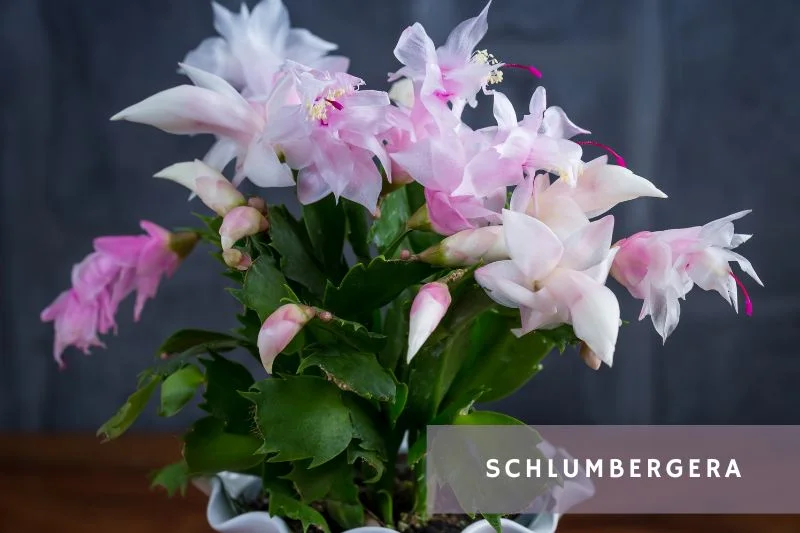
Ready for a festive touch? Schlumbergera, or the Holiday Cacti, bloom in sync with their namesake holidays. They require specific care to thrive, but oh, the joy of seeing their large, vibrant flowers in full bloom!
- Native to: Brazil
- Ease of care: Moderate
- Flowering Season: Varies by species
- Flower colors: Red, White, Pink
5. Ghost Plant (Graptopetalum paraguayense)

Straight from sunny Mexico, the Ghost Plant isn’t just about its captivating rosettes of pearly, opalescent leaves. This succulent harbors a beautiful secret – come late winter to spring, it unveils tiny, star-shaped flowers that glow in a gentle yellowish-white hue.
- Native to: Mexico
- Ease of care: Easy
- Flowering Season: Late Winter to Spring
- Flower colors: Yellowish-white
6. Echeverias

Echeverias come in a wide array of colors and forms. These evergreen beauties, native to Central America, are well-known for their attractive rosette formation and eye-catching hues.
Blooming mostly in spring and summer, their flower stalks reach for the sky, showcasing bell-shaped flowers in stunning shades. From the fiery red flowers of Echeveria ‘Black Prince’ to the soft pink blooms of Echeveria ‘Lola,’ there’s one for every garden aesthetic.
- Origin: Central America
- Care Level: Easy to Moderate
- Bloom Time: Mostly Spring and Summer, but varies by species
- Flower Colors: Varies by species
7. Starfish Plant (Orbea variegata, formerly known as Stapelia variegata)

Adding a unique-looking succulent – the Starfish Plant. Its large, star-shaped flowers are colored in yellow and speckled with maroon. They appear from late summer to fall and are… a bit different. So, if you are looking for an unusual addition to your succulents garden, this one is the right pick for you.
However, you should know that the Starfish Plant is also known as Carrion Cactus because of its putrid odor. That being said, it might not be a good idea to smell it.
- Native to: South Africa
- Ease of care: Moderate
- Flowering Season: Late Summer to Fall
- Flower colors: Yellow with maroon speckles
8. String of Pearls (Senecio rowleyanus)

Imagine a waterfall of tiny green pearls cascading from your shelf, blooming with delicate, brush-like flowers. This stunning succulent is easy to care for and adds a faerie touch to any space.
- Origin: Southwest Africa
- Care Level: Easy
- Bloom Time: Summer
- Flower Colors: White
9. Jade Plant (Crassula ovata)
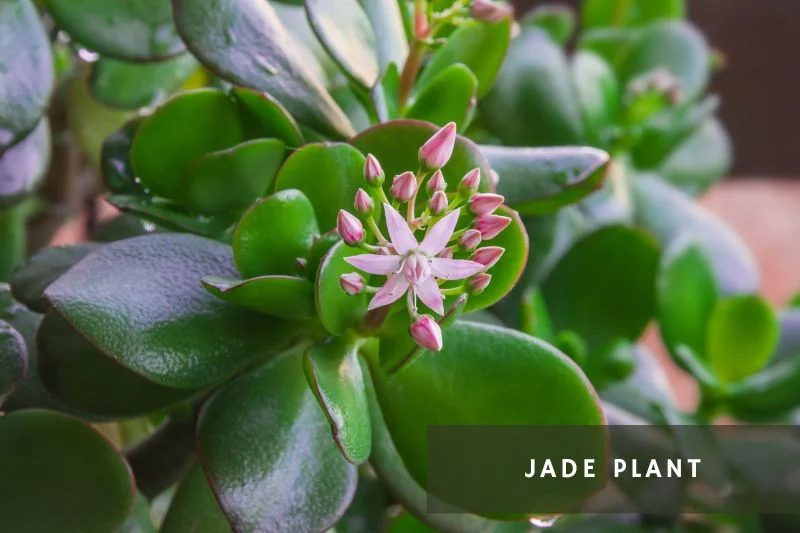
The evergreen Jade Plant is your indoor garden’s lucky charm! Hailing from South Africa, this resilient succulent displays clusters of starry white or pink flowers. Their vibrant green leaves, symbolizing growth and renewal, are a treat for the eyes all year round.
- Origin: South Africa
- Care Level: Easy
- Bloom Time: Winter
- Flower Colors: White or Pink
10. Mammillaria

Home to over 200 species, the Mammillaria family offers a flowering succulent for every enthusiast. Typically easy to care for, these cacti stun with a ring-like formation of bright blooms, creating a crown of flowers.
- Origin: Central and South America
- Care Level: Easy
- Bloom Time: Spring
- Flower Colors: Varies by species
11. Crown of Thorns (Euphorbia milii)
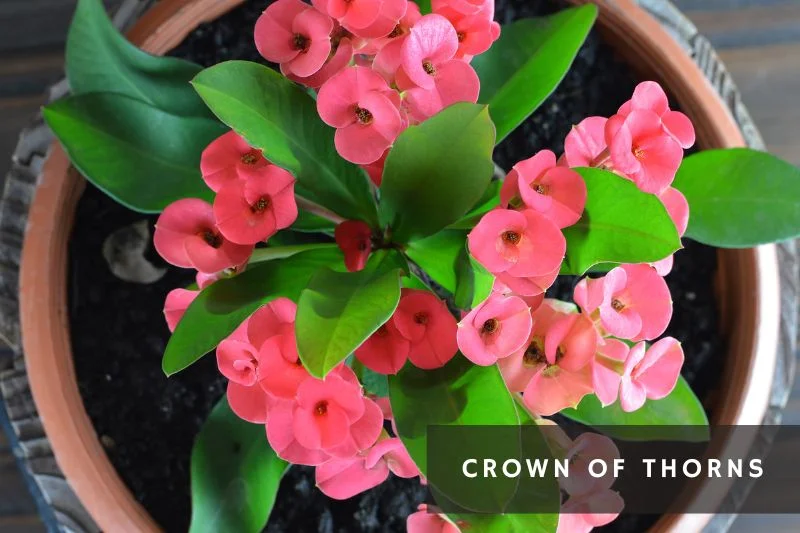
Don’t be fooled by its prickly exterior; the Crown of Thorns is a loyal bloomer, gracing your garden with year-round flowers. Its delicate, star-shaped blooms create a striking contrast against its thorny stems—an ode to beauty and resilience in one pot!
- Origin: Madagascar
- Care Level: Moderate
- Bloom Time: Year-round
- Flower Colors: Red, Pink, Yellow, or White
12. Living Stones (Lithops spp.)
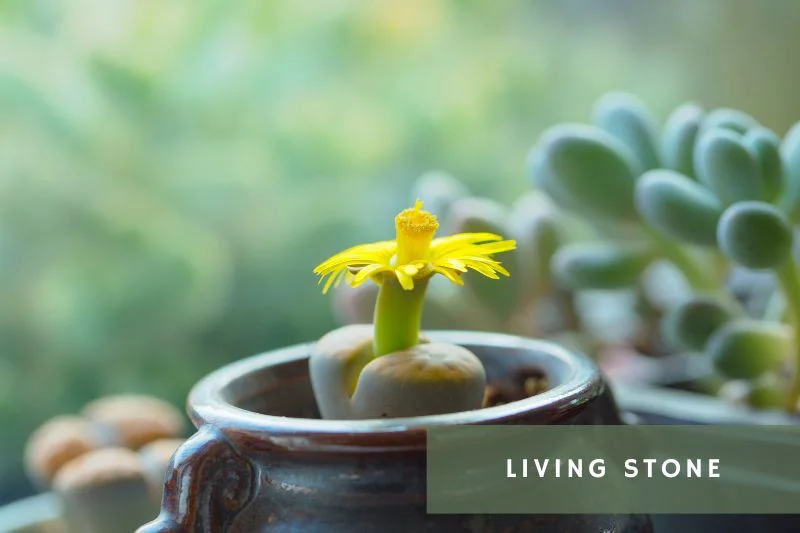
Their peculiar, stone-like appearance makes them a unique addition to your collection. And then, they surprise you with a beautiful daisy-like flower that can sometimes exceed the size of the plant itself!
- Origin: Southern Africa
- Care Level: Moderate
- Bloom Time: Fall
- Flower Colors: Yellow or White
13. Kalanchoe

Known for their long-lasting flowers and diverse varieties, Kalanchoes are truly the cherry on top of any succulent collection. Whether you prefer the neon blossoms of Kalanchoe blossfeldiana or the puffball blooms of the ‘Mother of Thousands,’ there’s a Kalanchoe for every taste.
- Origin: Madagascar and Tropical Africa
- Care Level: Easy
- Bloom Time: Varies by Species
- Flower Colors: Varies by Species
Conclusion
And there you have it, our list of flowering succulents to transform your indoor green space. Whether you’re a seasoned gardener or a novice green thumb, there’s a succulent for everyone. From the mysterious allure of Moonstones to the charming waterfall of the String of Pearls, these blooming wonders are guaranteed to elevate your indoor garden.
Choose your favorite(s), find a pot that complements their natural beauty, and embark on a rewarding gardening journey. Oh, and for more inspiration, make sure to check out our article on yellow-flowering houseplants.

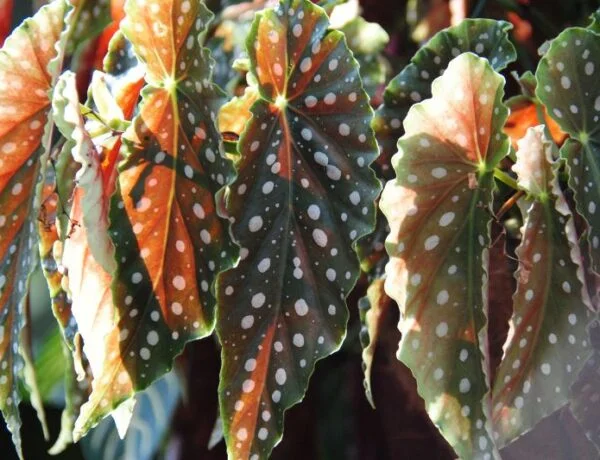

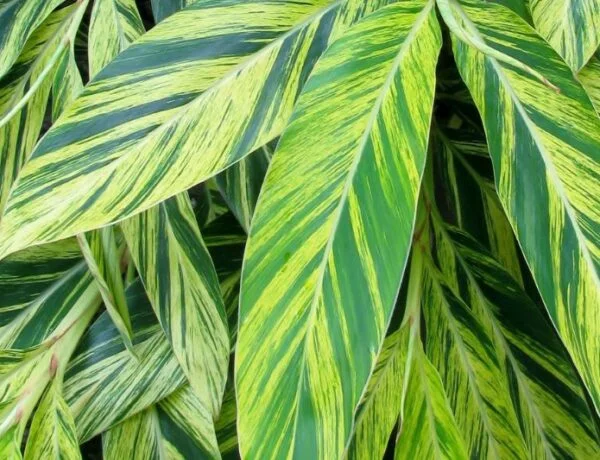


No Comments